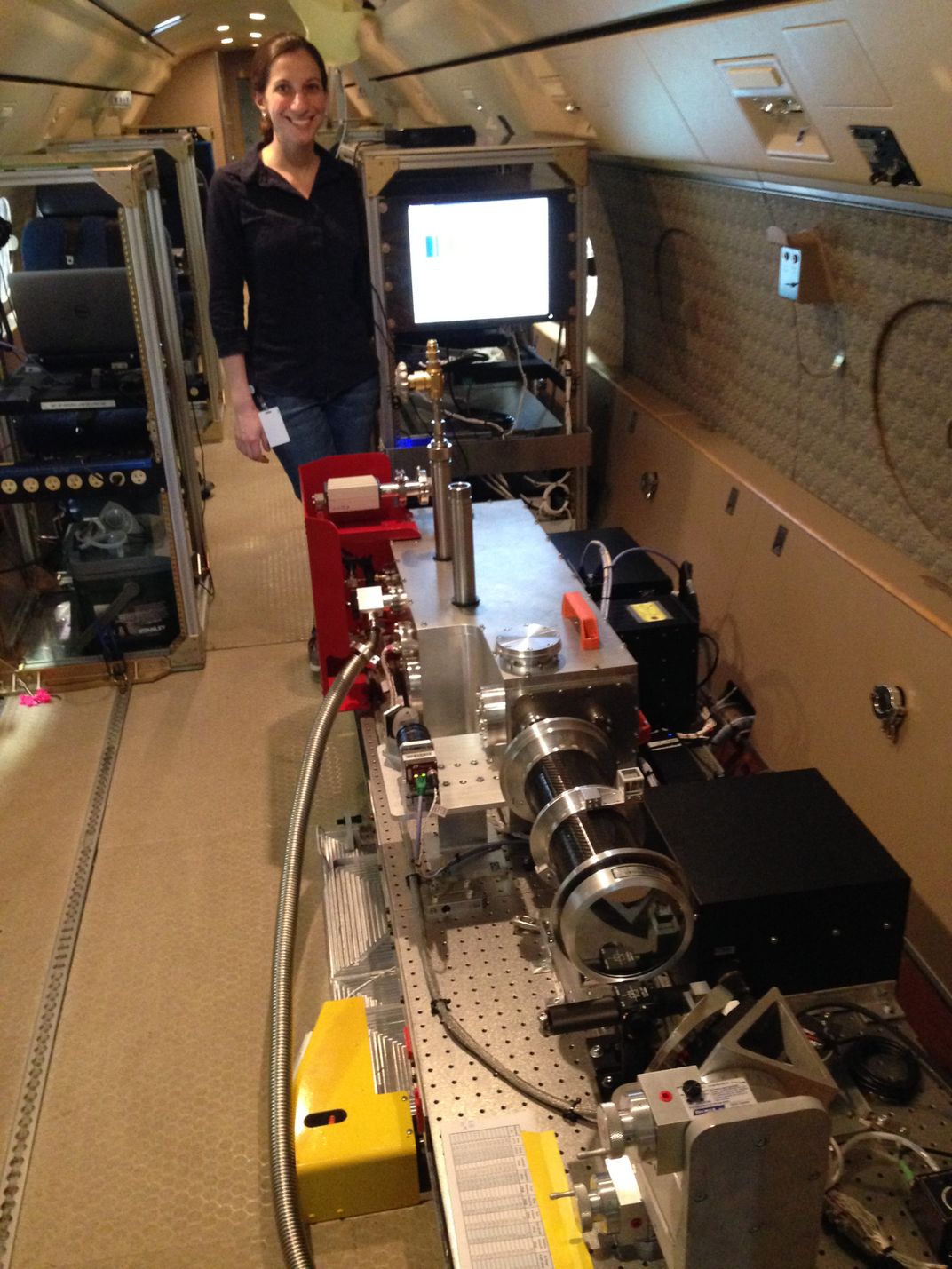Chasing the Eclipse at 45,000 Feet
Researchers aboard a Gulfstream V will study the sun’s rarely-seen outer atmosphere.
/https://tf-cmsv2-smithsonianmag-media.s3.amazonaws.com/filer/59/58/5958b378-fee9-430f-9757-9fccc4bba1c7/noaa_earth_system_research_laboratory_aircraft.jpg)
On August 21, as millions of Americans turn their faces to the sky and marvel at a total solar eclipse, Jenna Samra’s eyes will be glued instead to a laptop screen. She will miss the spectacle because she’ll be inside a Gulfstream V jet, racing at more than 500 miles per hour to do science in the moon’s shadow.
Samra, a graduate student at the Harvard-Smithsonian Center for Astrophysics in Cambridge, Massachusetts, is one of many scientists who are spreading out across the United States to gather data on the eclipse. Total solar eclipses aren’t rare—one happens somewhere on the planet about every 18 months—but this one is so convenient, for so many researchers, that it promises to be one of the best studied ever. For most scientists, that means studying the sun’s outer atmosphere, or corona — the superhot plasma that appears as ethereal streamers but is ordinarily not visible because the sun’s disk is too bright.
Samra and her colleagues plan to study the corona at infrared wavelengths, which few other scientists have done. By analyzing the corona’s light spread out into its various colors, they aim to learn more about the sun’s magnetism. Patterns imprinted in the infrared light allow the team to measure magnetic fields directly.
Such observations are rare because water vapor in Earth’s atmosphere makes infrared measurements difficult. “If we could observe from the ground we would,” Samra says. “Putting it on a plane makes it a lot more challenging.”
The jet is operated by the National Center for Atmospheric Research in Boulder, Colorado, and is typically used for experiments such as collecting atmospheric gases. For the eclipse study, Samra’s team built a stabilizing platform that could be strapped to the cabin floor to keep the scientific instruments pointing at the sun at all times.
From its base in Chattanooga, the airplane will take off shortly before the eclipse, then fly north and east to intercept the moon’s shadow at an altitude of around 45,000 feet. Traveling along the same path as the eclipse, it’s expected to stay in totality for roughly four minutes — better than the two minutes and 40 seconds that Earthbound observers are limited to, at best.

Light from the totally eclipsed sun will fall through a special window made of sapphire, which transmits infrared light better than ordinary glass. From there the light hits an adjustable mirror that directs it first into a visible-light camera, whose feed Samra will watch on her laptop, and then into the infrared instrument that her supervisor, astrophysicist Ed DeLuca, will monitor.
Their flight isn’t the only eclipse-chasing plane. Two NASA WB-57 jets will fly out of Houston’s Ellington Field with paired telescopes mounted on their noses. These will take high-speed video of the eclipse in visible light, and will photograph the entire corona at infrared wavelengths in order to help Samra’s team interpret their data.
“We really don’t know what we’re going to find,” says Craig DeForest, a solar physicist at the Southwest Research Institute in Boulder, who is on the NASA team. “Nobody’s ever done this before.”
Other experiments across the country include student groups that aim to broadcast live video of the eclipse from high-altitude balloons. Some scientists will analyze how the eclipse affects radio transmissions in Earth’s upper atmosphere. Another NCAR team will drive a truckload of equipment to Casper Mountain in Wyoming, to watch the eclipse with yet another infrared camera and to study polarized light in the corona.
Meanwhile, up in the airplane, Samra will be chasing totality as fast as she can. “If we can just get through this and get data, I’ll be so happy,” she says. “I won’t even mind that I didn’t see it.”